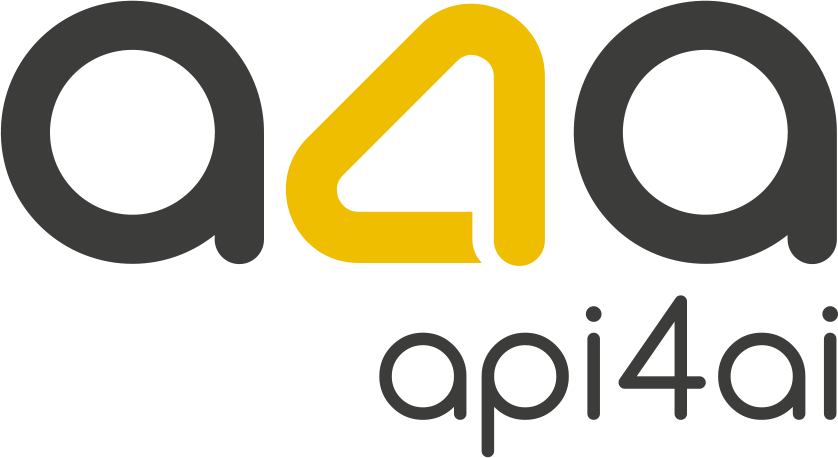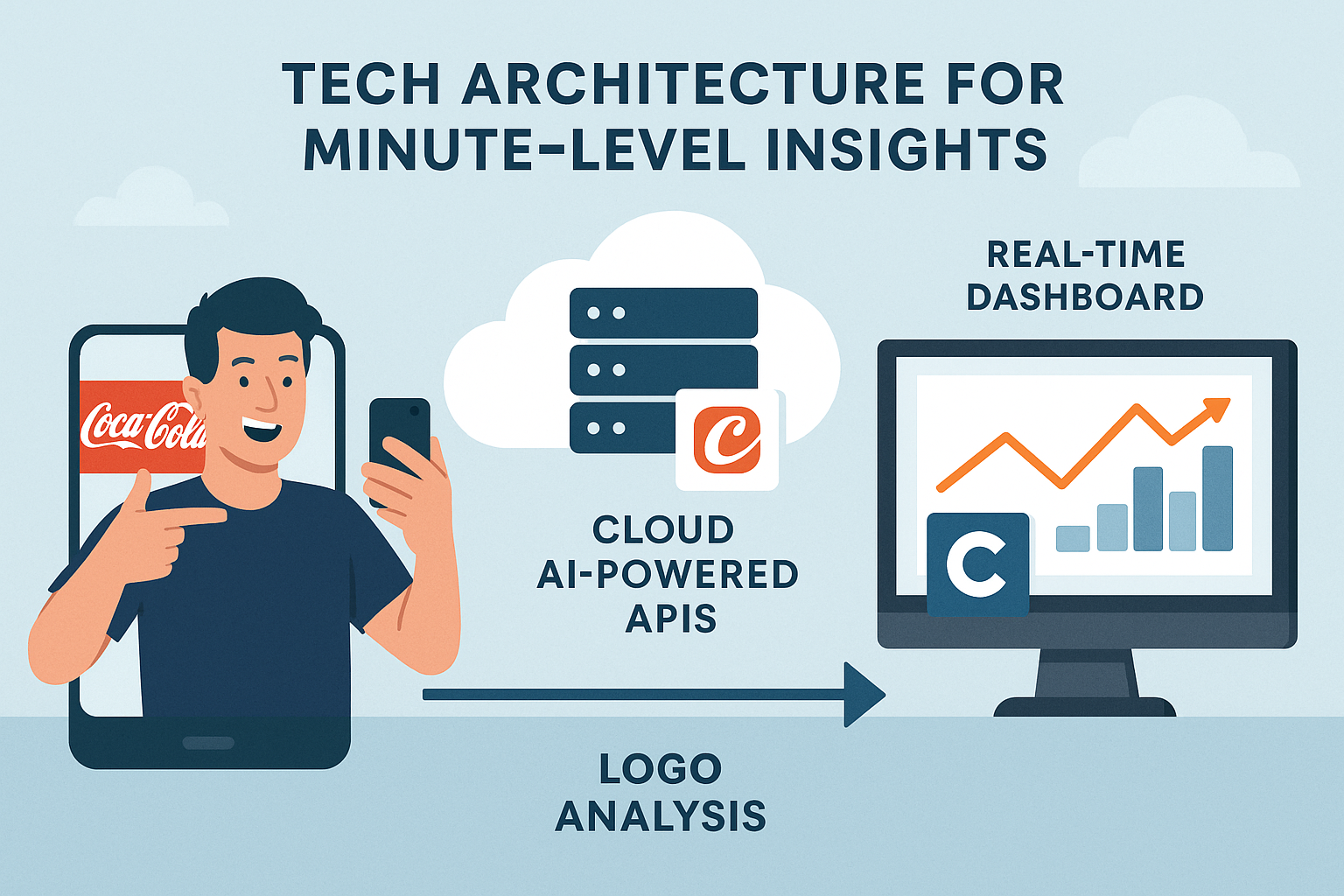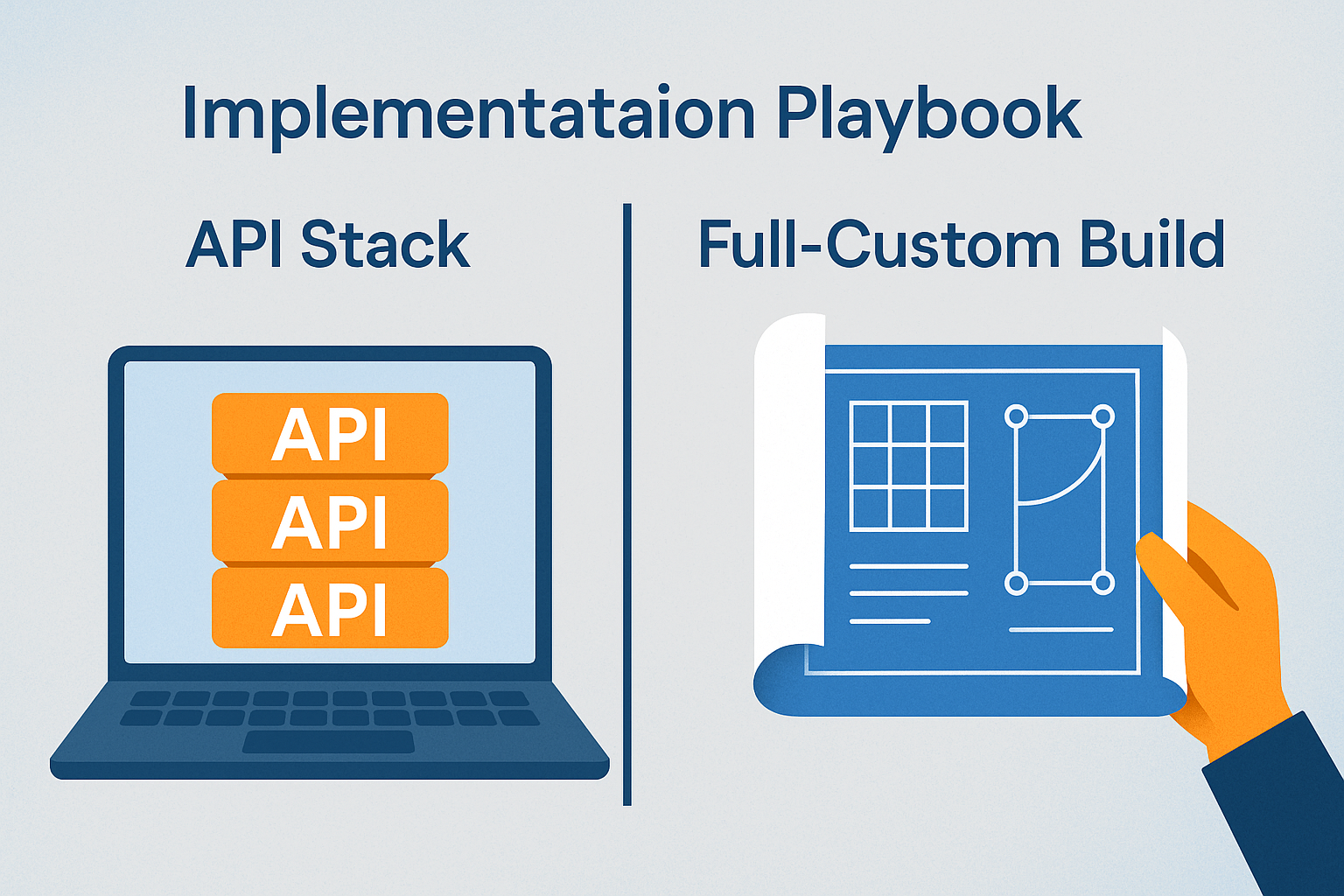Fans as Sensors: Crowdsourced Logo Audits at Mega-Events
Introduction — From Broadcast-Centric to Crowd-Centric Metrics
For decades, the gold standard in measuring sponsorship visibility at major events has relied on broadcast feeds and official camera angles. Yet, as the digital ecosystem evolves, C-level leaders across marketing, sports, and media are seeing a fundamental shift: the true breadth of brand exposure now happens outside the lens of traditional TV.
Today’s attendees are more than just spectators — they’re active content creators. The rise of smartphones and social media has transformed every fan into a potential broadcaster. From the moment they arrive at a stadium or arena, fans are capturing selfies, panoramic crowd shots, and spontaneous moments from their unique vantage points. These images flood platforms like Instagram, TikTok, X (formerly Twitter), and private event apps — often within minutes of being taken.
This seismic shift has created a massive, untapped “data lake” of user-generated content (UGC) from thousands of random angles, all originating from the heart of the live experience. Unlike official broadcast footage — which is limited by fixed camera locations and editorial choices — these fan images reveal what’s actually visible to the crowd at any given second, providing a raw and authentic record of brand interactions.
Why does this matter for executives and rights-holders?
Traditional media audits can leave critical gaps. Cameras might miss entire sections of a venue, or fail to capture the grassroots buzz around pop-up sponsor activations, product placements, or even ambush marketing. Manual audits are slow, costly, and typically delivered long after the event’s momentum has passed.
Harnessing the collective lens of the crowd offers several strategic advantages:
Real-time Insights: Fan-uploaded images arrive continuously, enabling faster measurement and response.
Authenticity: Random, user-driven photos reflect genuine audience exposure, not staged or selective views.
Comprehensive Coverage: Thousands of unique angles eliminate blind spots and uncover exposure opportunities that broadcasts can’t.
The search volume for terms like “fan-generated content analytics” and “stadium selfie insights” has spiked in recent years, mirroring industry recognition of this trend. As leading sponsors demand data-driven proof of ROI, and as digital transformation reshapes event experiences, the most forward-thinking organizations are embracing the concept of the fan as a sensor — a living, breathing network of mobile cameras whose collective perspective can be mined for powerful, business-critical sponsorship intelligence.
This blog explores how turning fans’ selfies into actionable data is reshaping sponsorship measurement — and how a new class of computer vision APIs makes this vision both practical and scalable for events of any size.
The Untapped Data Lake in Fans’ Hands
Imagine the collective impact of tens of thousands of fans, all snapping photos and sharing their personal perspectives from a packed stadium or arena. At today’s mega-events — whether it’s a global football final, a headline concert, or a citywide festival — this has become the new norm. According to recent industry reports, more than 90% of attendees now post photos or videos to social media within hours of the event, and a significant portion opt into official event apps or branded hashtag campaigns.
This flood of user-generated content (UGC) represents a vast and largely underutilized data lake. Every selfie, group shot, and panoramic crowd image carries more than just memories — it’s packed with business intelligence. Each image is geotagged, time-stamped, and often tagged with the event name or sponsor hashtags, automatically supplying the critical context that brands and rights-holders need for real-time analysis.
Why is this such a strategic opportunity?
Unlike broadcast feeds or venue-controlled cameras, these fan-generated images offer:
Genuine Variety: Fans capture unique, unscripted moments from every corner of the venue, creating a 360-degree view that no official crew could ever replicate.
Authentic Perspectives: User-driven content reflects what attendees actually see and care about — be it sponsor banners, branded giveaways, pop-up activations, or even spontaneous ambush marketing.
Built-In Distribution: Social platforms like Instagram, TikTok, and X don’t just host these images — they amplify them, instantly reaching millions far beyond the stadium walls. This organic spread boosts both visibility and engagement for sponsors.
For rights-holders and sponsors, this presents a unique chance to move from anecdotal feedback to quantitative, evidence-based insights — all without the need for extra infrastructure. The sheer volume and randomness of fan-taken photos ensure that every activation, banner, or product placement gets covered from countless angles, dramatically reducing blind spots.
The critical enabler: automation and AI.
Manual review of thousands — or millions — of images is impossible at scale. However, with advancements in cloud-based image recognition, computer vision APIs can now sift through this tidal wave of UGC to identify and log sponsor logos, brand marks, and even unauthorized ambush appearances. By tapping into existing social media streams or integrating with event apps, these solutions provide near-instantaneous analytics on how, when, and where brands appear in the real world.
For C-level executives, the message is clear:
Your audience is already capturing the data you need. The real challenge — and opportunity — is in harnessing this content efficiently, converting it from digital noise into actionable business intelligence. Those who move first to tap into this untapped resource will set a new standard for sponsorship transparency, fan engagement, and competitive advantage in the digital era.
From Selfies to Sponsor Exposure Dashboards
Transforming fan-generated selfies and crowd shots into meaningful sponsor visibility metrics may sound futuristic — but it’s not just possible, it’s already happening at leading events. The secret lies in harnessing cutting-edge computer vision technology to turn a chaotic flood of images into structured, real-time intelligence for rights-holders and sponsors.
Here’s how the process works in practice:
Real-Time Image Collection:
Fans continuously upload photos through event apps, social media platforms, or designated hashtags. With proper consent, these images can be funneled into a secure analytics pipeline, ready for instant processing. The sheer volume of incoming content ensures comprehensive, unscripted coverage from every section, row, and concourse of the venue.Automated Logo and Brand Detection:
Advanced image recognition APIs — such as a Brand Recognition API — scan each image, detecting and logging every instance of sponsor logos, brand marks, and even secondary signage. Modern models can distinguish between dozens or hundreds of brands, work across varying lighting and angles, and ignore false positives like generic patterns or unrelated text.Data Aggregation and Visualization:
Detected logos are automatically mapped by time, location, and frequency. The results feed into live dashboards that aggregate exposures into clear, actionable metrics:Heatmaps highlight where brand presence is strongest or weakest within the venue.
Exposure timelines reveal when brands achieve maximum visibility throughout the event’s duration.
Comparative analytics show which activations, placements, or campaigns drive the most engagement in real-world conditions.
Instant Alerts and Deep Dives:
If a non-contracted brand or an ambush logo appears, the system can flag it immediately for event staff, enabling rapid response to protect category exclusivity and sponsor investment. At the same time, authorized brands get a robust, data-backed story to share with stakeholders, reinforcing the value of their partnership.
The Executive Value Proposition:
This end-to-end approach empowers rights-holders and sponsors with actionable insights that simply weren’t possible with traditional manual audits or post-event reports. No more waiting weeks for after-the-fact analyses or relying on sample-based spot checks. Instead, executives gain access to live dashboards tracking the true reach and impact of every sponsorship asset — updated minute by minute, powered by the crowd itself.
Why Now?
Searches for terms like “real-time logo detection,” “brand exposure analytics,” and “sponsorship ROI measurement” have surged, reflecting the urgency for faster, more transparent reporting. For C-level leaders, this means smarter negotiations, data-driven renewal discussions, and the confidence to adjust strategies on the fly — maximizing the value of every sponsorship dollar.
By integrating scalable APIs for logo detection and leveraging the ever-growing stream of fan media, organizations can transform the humble selfie into a strategic asset — one that powers smarter decisions and delivers measurable business outcomes in real time.
Tech Architecture for Minute-Level Insights
Turning a torrent of fan-generated images into actionable, near-instant sponsor analytics requires a robust yet flexible technology stack. Today’s cloud and AI landscape offers the tools to deliver real-time visibility — even at the scale of global mega-events — without the need for heavy on-site infrastructure or custom hardware deployments.
The Modern Pipeline: Mobile to Dashboard
Image Ingestion at the Edge
The process starts where the images are created: on fans’ mobile devices. Modern event apps, loyalty programs, or even public hashtags can act as collection points, funneling thousands of images directly into the analytics pipeline. Integration with major social platforms and event tech providers enables seamless, permission-based data gathering — while respecting user privacy and platform policies.Secure, Scalable Cloud Processing
As images arrive, they’re immediately routed to a secure, cloud-based environment. Here, the power of containerized computer vision APIs comes into play. These cloud functions scale automatically to handle spikes in upload volume — such as the rush during halftime or the winning moment — without lag or bottlenecks.Automated AI Analysis
Each image is analyzed for sponsor logos, brand marks, and other relevant visual cues using high-performance recognition models. Solutions like the Brand Recognition API are designed to operate efficiently in the cloud, detecting logos even in challenging conditions: partial occlusion, low lighting, or fast-moving scenes.
To address privacy and compliance, additional APIs can automatically redact faces, anonymize personal features, and remove sensitive background content. This not only ensures GDPR and CCPA compliance but also increases trust with fans and partners.Real-Time Data Aggregation and Visualization
Detected brand appearances are immediately aggregated and visualized in executive dashboards. These dashboards, often built on familiar BI platforms, translate raw detection events into clear, strategic KPIs — brand exposure heatmaps, time-series graphs, and campaign effectiveness reports, all updated minute by minute.Custom Models for Strategic Differentiation
While out-of-the-box APIs cover most mainstream brands and common event needs, forward-thinking organizations can opt for custom-trained models to recognize niche sponsor assets — such as limited-edition products, region-specific signage, or non-Latin scripts. This customization, handled by experienced AI providers, further tightens the link between the real-world event and actionable business intelligence.
Key Architecture Advantages for Executives:
Speed and Flexibility:
Cloud-native solutions are quick to deploy, easy to scale, and compatible with most existing event and marketing tech stacks. No lengthy procurement cycles or on-premises hardware headaches.Security and Compliance:
Images and analytics flow through secure channels with built-in privacy safeguards, ensuring brand reputation and regulatory adherence are protected at every step.Cost-Efficiency:
Pay-as-you-go pricing models let organizations match infrastructure spend to actual event volume, while modular APIs allow for rapid pilots or full-scale deployments as strategy evolves.Future-Proofing:
This architecture isn’t tied to a single platform, event, or use case. Whether scaling up for the Olympics or running a targeted campaign at a local festival, the same pipeline adapts — delivering actionable, minute-level insights from wherever the fans are.
The bottom line:
With the right tech architecture, turning raw crowd content into live, high-value sponsor analytics is no longer a moonshot. For C-level executives, it’s a practical, scalable way to unlock new ROI, prove value to partners, and future-proof brand engagement in the fast-evolving world of live events.
Strategic Payoffs for Rights-Holders & Sponsors
Embracing crowdsourced logo analytics isn’t just about technology — it’s a direct path to higher strategic value for every player in the live events ecosystem. For rights-holders and sponsors, turning fan-generated content into actionable brand exposure metrics unlocks new business opportunities, mitigates risk, and transforms how success is measured at every event.
Real-Time ROI, Not Just “Visibility”
Traditional post-event audits often fall short, delivering only partial, delayed insights into sponsorship performance. With near-instant analytics from fan imagery, sponsors can now track their brand’s presence throughout the event in real time. Executive teams get continuous, data-driven updates — heatmaps showing exactly where their logo appears, exposure trends by the minute, and granular comparisons between competing placements or campaigns.
This move from retrospective “visibility reports” to live, dynamic exposure dashboards gives rights-holders a new, highly marketable asset. They can offer sponsors instant feedback, prove delivery on contract terms, and supply transparent, data-backed proof points for premium renewals or upsells.
Protecting Exclusivity and Brand Value
Ambush marketing and unauthorized brand appearances can undermine exclusive sponsorship deals and erode trust. By monitoring crowd images for non-contracted or rival logos, organizations can identify and respond to breaches instantly. Event staff can be alerted in real time to remove offending signage or manage rogue activations — ensuring the value promised to sponsors is fully protected.
Optimizing Campaigns on the Fly
Minute-by-minute analytics empower both sponsors and rights-holders to optimize their strategies during the event — not just after. If a specific activation, banner, or on-field placement underperforms in exposure, teams can quickly adjust — relocating assets, activating social promotions, or fine-tuning camera focus in real time to boost results.
Driving Dynamic Pricing and Revenue Innovation
With clear, quantifiable data on brand exposure, rights-holders gain a powerful tool for dynamic sponsorship pricing. Inventory can be repriced mid-event or for future events based on actual, not estimated, audience reach. Premium placements can be auctioned based on live demand signals, while underperforming assets can be bundled, discounted, or enhanced to maximize total revenue.
Strengthening Stakeholder Relationships
Transparent, credible analytics build trust with sponsors, partners, and regulators. Live reporting enables collaborative, data-driven decision-making, reduces disputes, and provides a compelling narrative to share with boards, investors, and media. Early adopters who champion this approach set a new benchmark for accountability and innovation in sponsorship.
SEO-Focused Takeaways for Executives:
Real-time sponsorship ROI analytics
Ambush marketing detection and brand safety
Dynamic pricing models for live events
Data-driven negotiation for contract renewals
Bottom line:
Crowdsourced logo audits don’t just deliver better data — they enable smarter, faster, and more profitable decision-making for everyone involved in live events. By harnessing this new approach, organizations position themselves as leaders in transparency, value delivery, and digital innovation.
Implementation Playbook — API Stack vs. Full-Custom Build
When transforming fan-generated images into real-time sponsorship analytics, executives are faced with a crucial decision: deploy an off-the-shelf API stack for rapid results or invest in a fully customized computer vision solution tailored to specific business needs. Understanding the strengths and trade-offs of each approach is essential for making the right strategic call — especially as competition and expectations around data-driven sponsorship intensify.
API-First: Fast, Flexible, and Scalable
The API-driven approach allows organizations to launch their logo analytics initiatives in days rather than months. Cloud-based solutions like Brand Recognition API, combined with other modular services for face anonymization and background removal, can be integrated into existing fan engagement apps, content management systems, or digital asset platforms with minimal development effort. This enables quick pilots, low upfront costs, and the flexibility to scale up or down based on event size or sponsor demand.
With pay-as-you-go pricing and proven reliability, API stacks are especially attractive for:
Organizations looking to validate ROI before deeper investment
Teams with limited in-house AI/ML expertise
Events with a broad but standard set of brand exposure requirements
Stakeholders who value speed-to-market and agility
Custom Vision Suite: Deep Integration and Differentiation
For events with complex sponsorship portfolios, non-standard logo shapes, region-specific requirements, or niche analytics goals, a bespoke solution may offer strategic advantages. Custom builds leverage specialized training on unique sponsor assets, handle rare or evolving logo variants, support multi-language recognition (including non-Latin scripts), and allow for the integration of proprietary business logic or data privacy workflows.
While custom solutions require higher upfront investment and longer development timelines, they pay dividends in:
Long-term cost efficiency for large-scale, recurring use cases
Deeper integration with internal systems and workflows
Superior accuracy in challenging conditions (e.g., low-resolution imagery, crowded scenes, or unique event formats)
Establishing a competitive advantage that’s difficult for others to replicate
Choosing the Right Path: Executive Considerations
Deciding between API-first and custom builds is not a one-size-fits-all proposition. C-level leaders should weigh several factors:
Volume of data and frequency of events
Latency requirements (real-time vs. post-event)
In-house technology capabilities
Brand and sponsor diversity
Regulatory and privacy landscape
In many cases, the optimal approach may be hybrid: starting with an API-based MVP to prove value, then layering in custom components as needs and ambitions grow. The flexibility to iterate — without being locked into a monolithic system — positions organizations to move quickly, minimize risk, and maximize impact.
Key Takeaway for Executives:
Embracing crowdsourced logo analytics doesn’t require a binary choice. With today’s technology, you can start fast, scale smart, and customize as your vision evolves — ensuring your organization stays ahead in the race for data-driven sponsorship and fan engagement.
Conclusion — Turning Crowd Pixels into C-Suite KPIs
The era of relying solely on official cameras and manual audits to measure brand presence at major events is over. Today, the collective energy of the crowd — their smartphones, their photos, their social sharing — has quietly become one of the most powerful and reliable sources of sponsorship intelligence available. Every selfie and shared image is not just a snapshot; it’s a real-time sensor, capturing authentic moments of brand interaction from every seat, concourse, and vantage point in the venue.
For C-level leaders, this evolution signals a fundamental opportunity:
What was once considered digital “noise” is now a goldmine of actionable data. By deploying the right mix of cloud-based APIs and, when needed, custom computer vision solutions, organizations can tap into a live, decentralized stream of sponsorship insights — no extra cameras or heavy infrastructure required.
The advantages are compelling:
Immediate, minute-level reporting that empowers sponsors and rights-holders to make smarter, faster decisions during and after each event.
Comprehensive, unbiased coverage that eliminates traditional blind spots and reveals the full picture of brand exposure — across the venue, among the audience, and even beyond the physical event through organic social sharing.
Enhanced protection against ambush marketing and unauthorized brand appearances, safeguarding sponsor investments and exclusive rights in real time.
Data-driven narratives that fuel more confident negotiations, unlock dynamic pricing strategies, and set new benchmarks for transparency and accountability in sponsorship agreements.
Looking ahead, the path is clear:
Organizations that recognize and embrace this shift — who move quickly to pilot, adapt, and scale fan-driven analytics — will lead the industry in sponsor satisfaction, fan engagement, and financial return. Early adoption not only delights current partners but also establishes a reputation for innovation and operational excellence that attracts new business.
The bottom line for the C-suite:
Turn crowd pixels into KPIs. Transform audience engagement into measurable ROI. With today’s technology, what was once invisible is now fully visible — and actionable — in real time. This is the new standard for sponsorship measurement, and the future belongs to those ready to lead.






